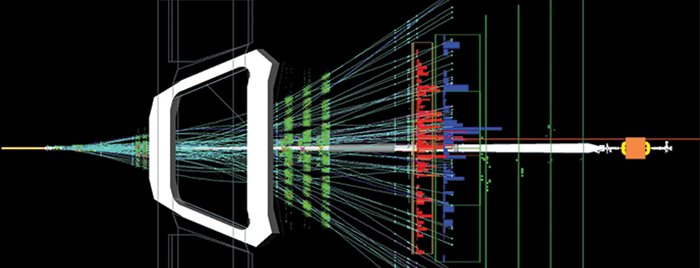The quest to understand the fundamental building blocks of nature and their interactions is one of the longest-running and most ambitious of human endeavors.
With the discovery of the Higgs Boson and other significant observations within the past decade, the Standard Model (SM) of sub-atomic particle physics has been validated as an accurate mathematical description of the strong, weak and electromagnetic forces.
However, Michael Sokoloff, professor of physics in the McMicken College of Arts and Sciences at the University of Cincinnati, is using Ohio Supercomputer Center services to help answer some of the remaining and, quite possibly, most interesting questions in the field:
“Why does nature express the symmetries embodied in the SM, and not other equally elegant symmetries? Why are there (even, are there) exactly three generations of basic building blocks (quarks and leptons)? Why are the masses of these building blocks so different from each other, both within a generation and between generations? What is the dark matter that pervades the universe? Does space-time have additional symmetries or extend beyond the three spatial dimensions we know? Are neutrinos, whose only SM interactions are weak, their own anti-particles?”
One of two principal paths used to address these questions at Europe’s Large Hadron Collider is the LHCb experiment, where scientists study very high-mass particles, called quarks. These particles exist in six variations known as flavors, whimsically referred to as up, down, charm, strange, top and bottom, although the latter two are also known as truth and beauty. Currently the foremost flavor experiment in the world, LHCb will run for the next decade and involves more than 650 physicists representing 65 different universities and laboratories.
“We are using the LHCb detector to study the interactions of composite particles containing heavy quarks created by protons colliding with other protons,” explained Sokoloff. “Large Monte Carlo samples of simulated data are required both for planning future operations of the experiment and for analyzing data after it is acquired.”
Sokoloff requested 600,000 units of computational and storage resources on OSC’s Oakley Cluster for LHCb collaborators. These resources should be sufficient to help Sokoloff and his colleagues understand how to optimize detector design and data selection strategies before data collection begins and how to understand the data they collect after the fact—all prerequisites to answering “the most interesting questions in physics.”
Project Lead: Michael Sokoloff, Ph.D., University of Cincinnati
Research Title: Flavor physics using the LHCb detector
Funding Source: National Science Foundation
Website: artsci.uc.edu/departments/physics/research/particle_experiment.html

